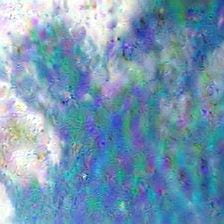This lab is trying an experiment --- a distributed approach of exploring following idea:
"Given many images of one scene, predicting the time an image was taken is very useful. Because you have to have learned a lot about the scene to do that well, the network must learn good representations to tell time, and those are likely to useful for a wide variety of other tasks"
So far we've made some progress (which you can partially follow in the #theworldisfullofclocks slack channel), with a start on framing the problem of: Given many images of a scene, how can you tell what time it is?
This google doc already lays out what are reasonable approaches to this problem. Here I want to share some visualizations that I want to make as we try to debug these approaches. These visualizations are of the data, and of the results of the data.
- An annual summary montage, with rows organized as "day of the year" and columns organized as "time of day" (maybe subselecting days and times to make the montage feasible)
- A daily summary montage with *all* the images from on day of a camera shown in a grid.
- An "average day" video/gif that shows the average 7:00am image (averaged over all days of the year), and average 7:10a image... etc.
Kudos to everyone who has started to work on this; I think we have some good ideas of directions to go!

















































